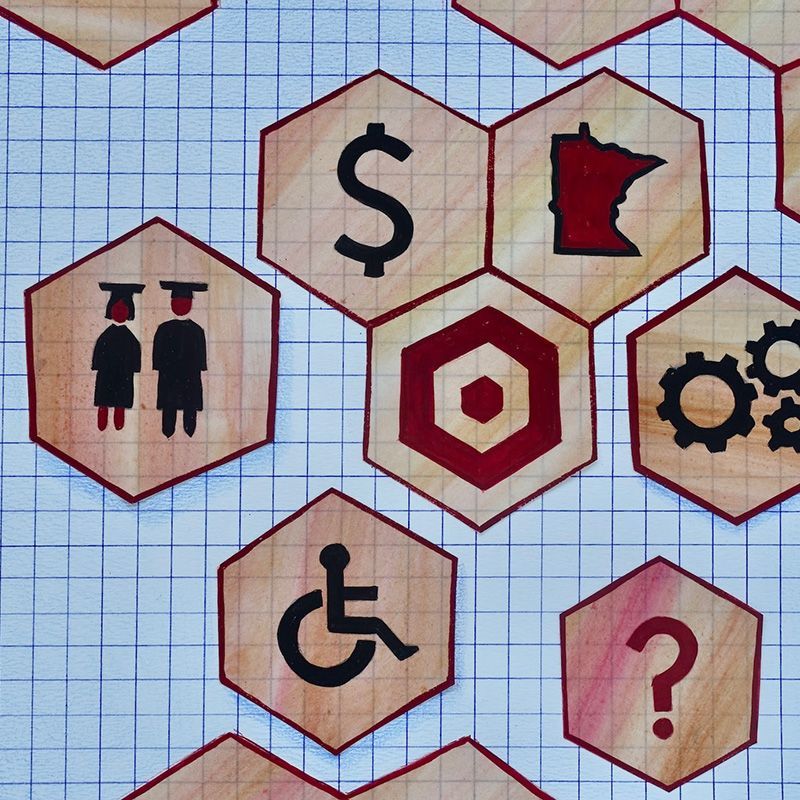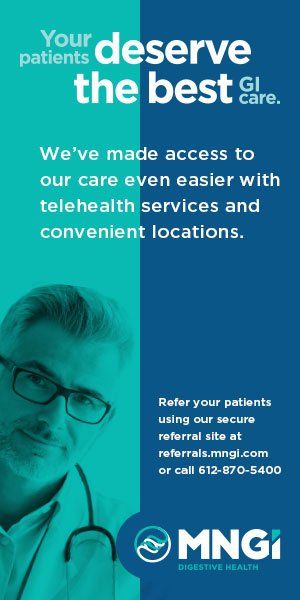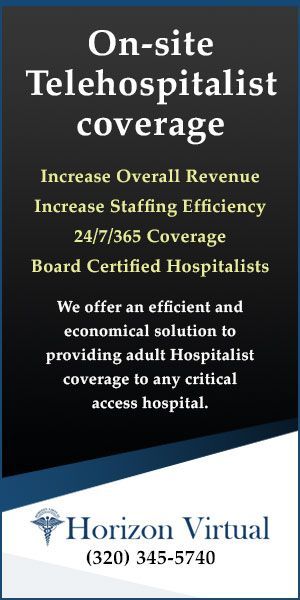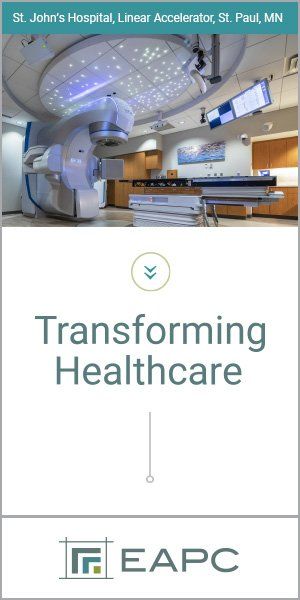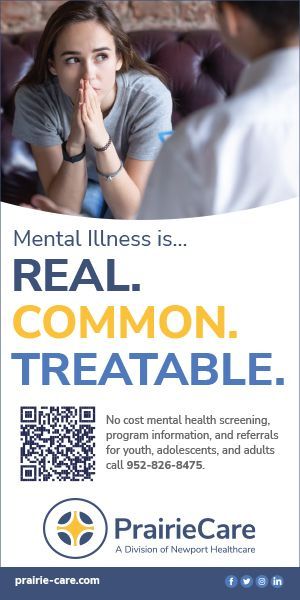he model of the health care delivery system in the United States has hospitals, clinics and specialty medical services on one side. On the other side are home health direct-care services, along with community-based services. The home health side is facing a complex crisis at the heart of which are personal care assistants (PCAs). Among other concerns, for individuals who rely upon PCAs for daily living, there is more demand than supply. There are not enough adequately trained PCAs to meet existing needs and growing demands.
cover story one
A Crisis in Home Health Direct Care
The Minnesota Solutions Model
By Jesse Bethke Gomez, MMA
The Metropolitan Center for Independent Living (MCIL) is based in St. Paul, Minnesota, and has been working for many years on comprehensive solutions to solve the direct care crisis. The agency was awarded a Community Innovation grant from the Bush Foundation to solve the crisis. What was discovered along the way is that the PCA workforce shortage crisis is part of a larger more intractable array of dire issues in direct care services. These issues have been growing for over 40 years, nurtured by static state and federal laws. Complex problems require complex solutions, and our work led to the development of the Minnesota Solutions Model.
The development process involved several key stakeholder groups. The effort was led by people with disabilities who rely upon PCAs for daily living and by PCAs, SEIU Healthcare Minnesota (a PCA union), PCA agencies and Minnesota First Providers Alliance. It also involved community advocates, Trellis and Area Agencies on Aging as providers of services for older adults and representatives from agencies at the state of Minnesota, including the Department of Human Services, the Department of Employment and Economic Development and the Department of Labor and Industry.
The evolution of the Minnesota Solutions Model has already seen remarkable state legislation, a first-ever PCA College Service Corps, the development of a unique new educational opportunity for PCAs, a competitive compensation plan and policy solutions that span from the federal government to state legislative opportunities. Minnesota has exemplified a spirit of working together to overcome the seemingly intractable and complex severe direct care crisis in order to bend the arc of history for the better for all. Yet, there is urgency for all to come together to work on these solutions.
The crisis in home health care delivery is far reaching.
Elements of the Crisis
In 2015, my first year as executive director of MCIL, I met with two leaders from the disability community, Tim Benjamin, the executive director of Access Press, and Rick Cardenas, a social worker and builder of community. Both were people who relied upon PCAs for daily living. They asked me what I was going to do about the direct care worker shortage crisis. I had no idea of the magnitude of this crisis. People were being forced out of their homes and even dying because there were not enough PCAs.
Many years later this problem has not improved, in fact in many ways it is worse.
Most people do not know that in order to qualify for certain federal and state services and benefits a person applying as an individual can have assets limited only to $2,000 and for a couple, assets limited to $3,000. Those asset limitation amounts have not changed in 40 years. That’s right, no cost-of-living adjustments, the same exact amount for the past 40 years. Due to federal laws, states have no alternative but to abide by these limitations, with some exceptions.
As a way forward Congress needs to ask for greater involvement and input from people with disabilities and older adults who rely upon direct care services. This input is needed in order to advance legislation that is person centered and supports independent living. Asset limitations need to be adjusted to today’s standard of living and employ an annual cost-of-living adjustment.
H.R. 34, the 21st Century Cures Act, was passed into law by the 114th Congress in 2016. It was designed to help accelerate medical product development and bring technological innovations to patients who need these products more quickly and more efficiently. Incorporated into legislation was language calling for further development of electronic health records.
Section 12006, which lacks the robust development of protocols found throughout the act, is one sentence: “Electronic visit verification system required for personal care services and home health care services under Medicaid.” Electronic visit verification (EVV) is a timesheet technology utilized predominantly by mobile telephones to track PCA timesheets. It requires that the person who receives the services verifies receipt electronically.
Section 12006 has become controversial because EVV utilizes a government-controlled global positioning services (GPS) tool that people who rely upon state PCA services are required to use. People are afraid to speak out about EVV for fear of losing their PCA services. Many individuals feel it is a violation of their privacy to be forced to utilize this tracking-based EVV in order to receive PCA services.
Of note, the Centers for Medicaid and Medicare Services (CMS) state there is no requirement to use GPS, but it is a common approach for implementation of the EVV requirements. An acceptable alternative to GPS is Interactive Voice Response, which requires the caregiver to check in and out using a landline or cellular device located at the individual’s home.
Minnesota has chosen to employ EVV with the government-controlled GPS for its PCA programs.
Minnesota should also seek to use the alternative EVV suggested by CMS out of an abundance of concern for the civil rights of people required to utilize EVV.
Congress needs to change this law and provide greater guidance for states to advance person centered care that is consistent with the intentions of the Cures Act. Congress needs to ask people who rely upon PCAs for their input about EVV. If it was the intention of Congress to have a government-controlled GPS as part of EVV in the Cures Act, it would have been written into law in 2016, but it wasn’t. The remedy for Congress in taking responsibility for the current state of EVV is to require testimony from people who rely upon PCAs and from PCAs themselves for their input about EVV in changing the law to be consistent with spirit and letter of the Cures Act.
A Quality Improvement Culture
Many years ago, I trained with the celebrated polymath W. Edwards Deming, PhD, who helped to rebuild the economy of Japan after WWII and 50 years ago helped the U.S. auto industry out of a crisis. He is considered one of the thought leaders who developed the global quality improvement movement. In his book “Out of the Crisis” he wrote, “Government service is to be judged on equity as well as on efficiency.” As we face a severe and growing crisis in direct care, that statement by Deming leads to the question: Why employ a quality improvement (QI) policy and culture for our home health care sector?
It seems self-evident that our country should have already adopted such a framework. Yet, nationally, throughout the past 40 years of direct care PCA/DSP services, very little research into improving quality has been funded and prioritized for the home health care sector. The Agency on Healthcare Research and Quality (AHRQ) and CMS both need to commit to a quality improvement framework for the home health care sector in order to lead our nation out of this crisis. We must have a commitment to improving quality in order to innovate and identify breakthroughs to greater equity, efficiency and accountability. To address the crisis we must add value to the service of people with disabilities and older adults who rely upon home health care for daily living.
Creating Solutions
These issues, whether the PCA worker shortages, asset limitation, EVV privacy concerns and the absence of a quality improvement policy framework for the home health care sector, are all interrelated. To address only one of these issues and leave all others as they are, Deming would counsel today that that approach would be “sub-optimizing.” The Minnesota Solutions Model has evolved to meet the challenge of addressing these five separate but interrelated concerns.
The first element is the National Declaration for Strengthening Direct Care Services and Benefits for People with Disabilities and Older Adults.
It identifies comprehensive policy recommendations and innovation to overcome intractable and interrelated issues within direct care services and long-term services and supports, offering scalable solution recommendations for our nation and for the states.
The creation of curriculum for a PCA certificate leading to higher wages is key
In summary, these include a new educational opportunity connected to wages commensurate with those of other certificate programs in health care, addressing assets limitations, EVV and other recommendations to ameliorate the crisis.
The second element is the report, “A More Certain Future: Certification for Personal Care Assistants/Aides,” by Kate Caldwell, PhD. This report identifies methods for solving the direct care crisis in part by having a certified PCA curriculum including a scalable rate structure nationwide. The report also identifies policies to be addressed at the national and state levels. Both of these documents may be accessed at the website of Metropolitan Center for Independent Living, (www.mcil-mn.org).
The third element is the creation of a PCA College Service Corps that provides a $4,500 incentive bonus award to college students who serve as a PCA over 30 weeks, serving 10 hours a week as a paid PCA with a Minnesota PCA agency in assisting an individual who is assessed at 10 hours per day of PCA assistance and directs his or her own care.
Thanks to a grant from the Margaret A. Cargill Foundation Fund of the Saint Paul & Minnesota Foundation and support from the state of Minnesota, MCIL is working with colleges and universities in Minnesota on this endeavor, with people in need of PCAs and their PCA agencies. This program has brought to light the great difficulty in attracting PCAs for people with complex conditions such as spinal cord injuries. MCIL is grateful to the volunteers of the PCA College Service Corps Advisory Committee for their guidance and that the focus of this new initiative remains on assisting people who are eligible for care under this service.
The fourth element resulted from working with key stakeholders of PCA services in Minnesota for over three years on creating an additional voluntary level to Minnesota’s PCA career lattice though a certificate educational opportunity. MCIL and a team of college faculty members has developed a certificate program curriculum leading to the credential of a certified PCA. This curriculum follows 12 essential job areas as identified by CMS. The strategic reason for the development of the curriculum in this manner is to harmonize the framework of the certified PCA for all 50 states with the CMS scope of PCA essential job areas in promoting alignment and continuity nationally.
This is a unique curriculum. The certified nursing assistant plays a vitally important role in the medical model health care sector. A certified PCA can play an equally important role in the home health care sector. A formalized educational opportunity leading to the credential of a certified PCA will increase the work force and create a better balance of educational opportunities in the health care field.
The fifth element addresses PCA compensation, which is a key factor in the work force shortage concerns. In 2021 a Minnesota PCA rate framework was passed into law. Ongoing legislative work will address compensation for the new certified PCA positions to assure their compensation is set at the median wage of the standard occupational code of a certified nursing assistant.
What is a Certified PCA?
Valerie De For, executive director of Minnesota State HealthForce Center of Excellence, at Winona State University, played a major role in creating the lattice for the Certified PCA program. The recently developed curriculum leading to the credential of a certified PCA can be applied as a real solution scalable throughout the United States. Describing the most concerning aspect of the direct care crisis, she said, “As I started learning about the direct care workforce crisis, I distilled it down into two descriptors. On the workforce side, there is little training required for the amazing and wonderful people who choose to work as PCAs and who are caring for some of our most vulnerable people in their homes. I don’t mean to imply that agencies aren’t providing great training and that PCAs aren’t well equipped to do their jobs. But there is a disconnect there between what is required for training in other areas of health care and what is required in this area. I think it limits the direct care workforce from being “seen” in the health care sector, could contribute to lower wages, and limits upward mobility.
“On the human side, people are being forced to live in group homes, assisted living, or nursing homes because they cannot receive the care they need in their homes. Parents are terrified about what will happen to their adult children when they are no longer able to care for them. Smart and talented adults are not able to work in jobs that they love because they lack the caregiver supports to make that possible. This is the absolute tragedy of a workforce and system failure.”
Addressing the promise of a curriculum leading to the credential of a certified PCA, tied to a competitive compensation of the median wage of a CNA, DeFor states, “The creation of curriculum for a PCA certificate leading to higher wages is key to building the visibility of the PCA occupation. By having another rung on a pathway, PCAs will be able to advance their knowledge and, importantly, have that advancement reflected in higher wages.”
A Journey Just Beginning
MCIL is working with Paralyzed Veterans of America to contribute to solving the direct care crisis for veterans receiving services from the U.S. Department of Veterans Affairs. Todd Kemery, national director and immediate past president, of Paralyzed Veterans of America, Minnesota Chapter, and vice chairperson of the MCIL board of directors, is a marine veteran, a former student at Liberty University, and due to an accident, became quadriplegic at the age of 21. Todd has dedicated his life to helping other veterans transition from a life-altering event to independent living. He explains why it is important we solve this direct care crisis from a VA perspective “For us in the veterans’ community there is a good majority who rely upon PCAs who also experience a critical gap in PCA support. What is happening on the veteran’s side is just like what is happening in the non-veteran’s side for people who rely upon PCAs who find themselves with PCA shortages and gaps. There are veterans who also require special care in PCA assistance as well. Many through no fault of their own are not prepared for this direct care crisis and the disruption in daily living as a result. I am also concerned for the veterans who do not have family who can serve as PCAs for them. Where can they can get needed help? There needs to be a safety net to help our veterans and I am thrilled that PVA and MCIL are working together to solve this crisis.”
The crisis in home health care delivery is far reaching. The Minnesota Solutions Model is a work in progress. It addresses the major elements of a crisis faced by those who require home health care to meet their daily needs for living. It will require ongoing commitment from elected officials and health care leaders to succeed. Inevitably there will be changes in the nature of the challenges; however, the right framework for meeting them today will include the bandwidth to adapt as the future may require. Understanding and sharing the complex nature of the issues is the first step out of the crisis toward lasting and meaningful change.
Jesse Bethke Gomez, MMA, is executive director for Metropolitan Center for Independent Living.
MORE STORIES IN THIS ISSUE
cover story one
A Crisis in Home Health Direct Care: The Minnesota Solutions Model
By Jesse Bethke Gomez, MMA
cover story two
The MN 2035 Plan: Improving Public Health
By Thomas E. Kottke, MD, and Clarence Jones





